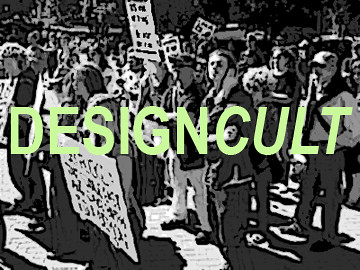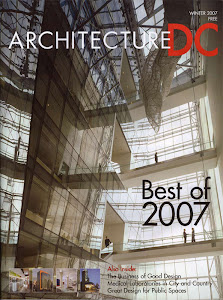
Thursday, December 13, 2007
Modernism In Your Neighborhood
The second house that I came across in the neighborhood of Glover Park, consisted of a modern addition to an existing classic Washington rowhouse. The first house was discussed in the post directly below this one. The existing house is located at the end of a row, and the entire exposed end and rear elevations are visible along the side street. This prominent and visible location was quite the opportunity for an "in your face" modern transformation to the unassuming and commonplace house. This is not the case as it was in the former house. The design of the modern addition actually works hard to keep with the original integrity of the house, and for that matter the houses in the entire row. It is rather tame on the modern intervention end. The extension of the roof ridge line is the only change along the front elevation, and this actually keeps with historical precedents where end houses were taller and a bit more prominent, having a "bookend" affect to the row. The exposed side begins to show the more rigid and simplified lines of modernism. The two story projection at first seems to be a very dramatic gesture, but it actually also plays on the historical precedent of the end houses on rows having a two story side bay that begins on the second floor and continues to the third. This element is a great example of contextual modernism. Moving to the rear, the walls open up with large amounts of glass and steel mullion systems. Balconies and decks are screened with a simple metal rail system, adding a nice layer to the composition of the facade. The projections on the first and third floors though, add a certain level of haphazardness. There is a lack of overall consistency along the rear elevation. A mitigation of window types and sizes, and less variations in massing could have cleaned the design up. The lack of difference in materiality and color makes the original and new pieces blend together, but almost in a negative way. Bolder gestures of more modern materials such as metal or wood cladding, rather than stucco, would have added a nice texture and subtle differentiation between both architectures. At least the stucco of the modern elements could have been painted a varied color other than the grey brick of the existing. Bottom line is that the modern interventions play on historical precedents, but revive them in a new way. This is what good contextual modernism should look like. Next time, more innovation with materiality would make this house stand out in a positive way just that much more. 

Subscribe to:
Post Comments (Atom)











No comments:
Post a Comment